The Golden Pavilion is the tourist name for a Zen temple named Kinkaku-ji located in Kyoto, Japan. The temple consists of several buildings, two ponds and gardens but the highlight of the temple is the building which gives it the name “Golden Pavilion”.
The Golden Pavilion is famous for its top two floors which are entirely covered in gold leaf. This gold leaf building is what makes this temple the most famous of the 2000 temples and shrines in the city of Kyoto.


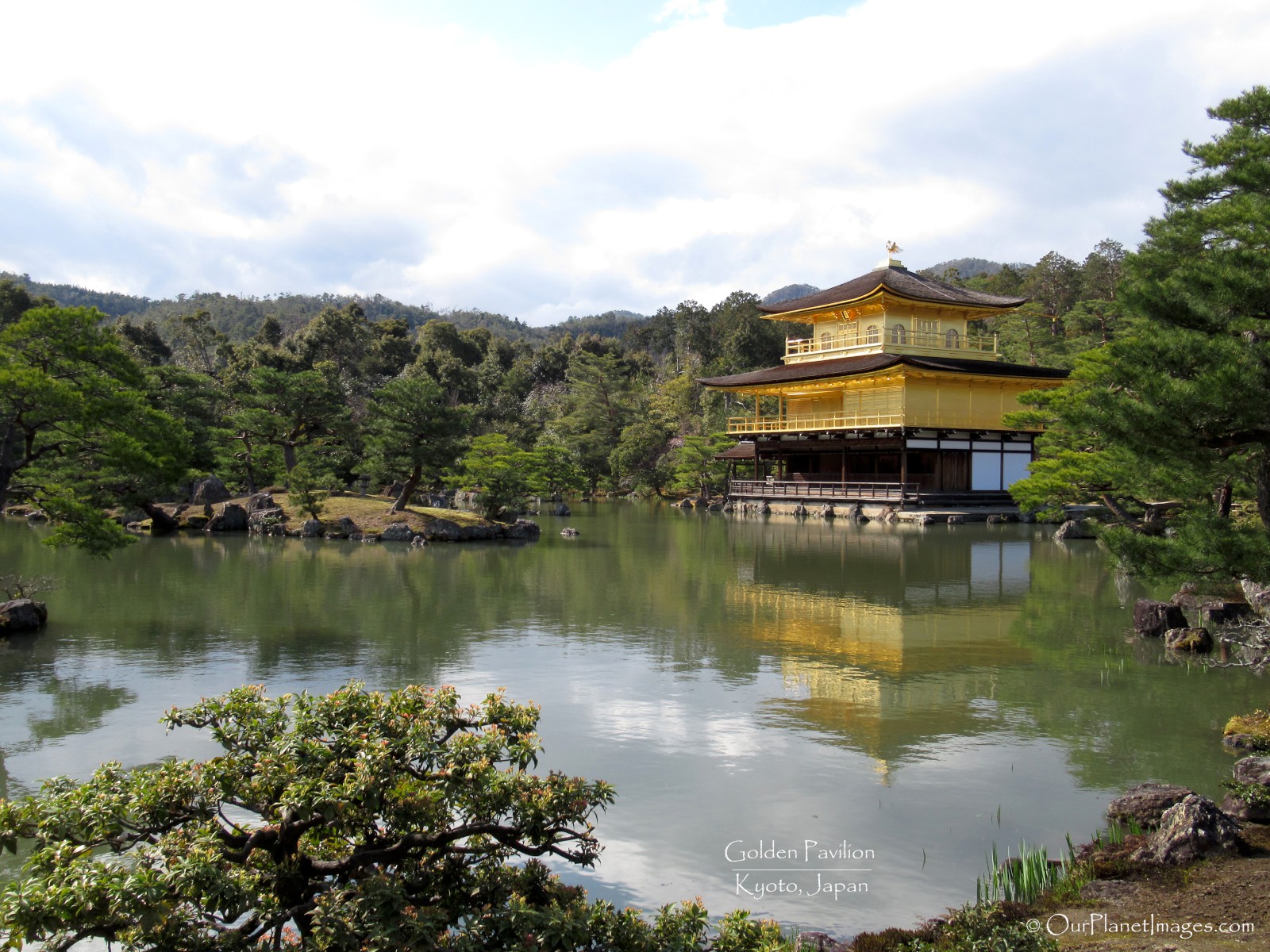
The pond in front of the Golden Pavilion is appropriately called Mirror pond because when the wind is calm it makes the Golden Pavilion even more beautiful with the reflection of the pavilion on the water.


The pond itself is an attraction of its own as it has several tree covered islands and rocks that took on different shapes as I walked around the pond.

The pavilion is larger than I had expected as it is 42 feet high and 33 feet wide.

On the back side of the pavilion is a small covered porch that extends into the pond. This porch was not easily seen until I went to the back of the pavilion.
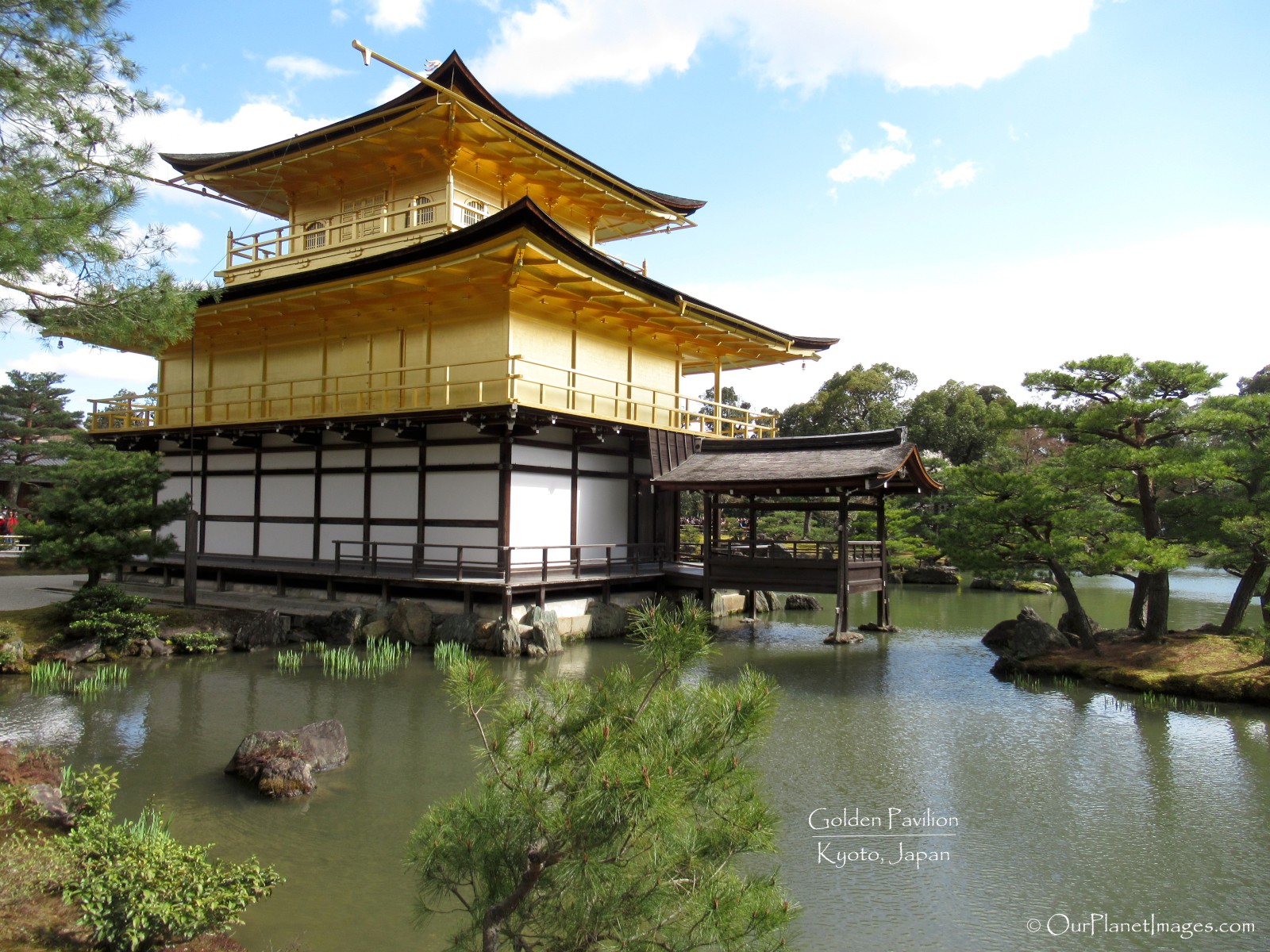


The largest island in the pond sits directly in front of the pavilion and gives the pavilion a different look than from any other viewpoint around the pond.


The building was originally built to serve as the residence of the retiring Shogun Ashikage Yoshimitsu (1358 – 1409) and was converted into a Zen temple shortly after his death. Currently, it is used as a storehouse of sacred relics. Some religious items can be seen on the first floor in the following photos



On top of the building sits a 3.7 foot high phoenix which is also covered in gold leaf.


While the Golden Pavilion is undoubtedly the highlight of the temple, the Kinkaku-ji temple also has other attractions to see. The map of the temple complex shows other places of interest.

Typical of Japanese gardens there are stone elements in the gardens of the temple. One of these is the small stone pagoda that in on the island of the second pond. The pagoda has a small Buddha on each side of the base.

The largest building in the temple is the living quarters of the former head priest. This building is shown in the photos below.



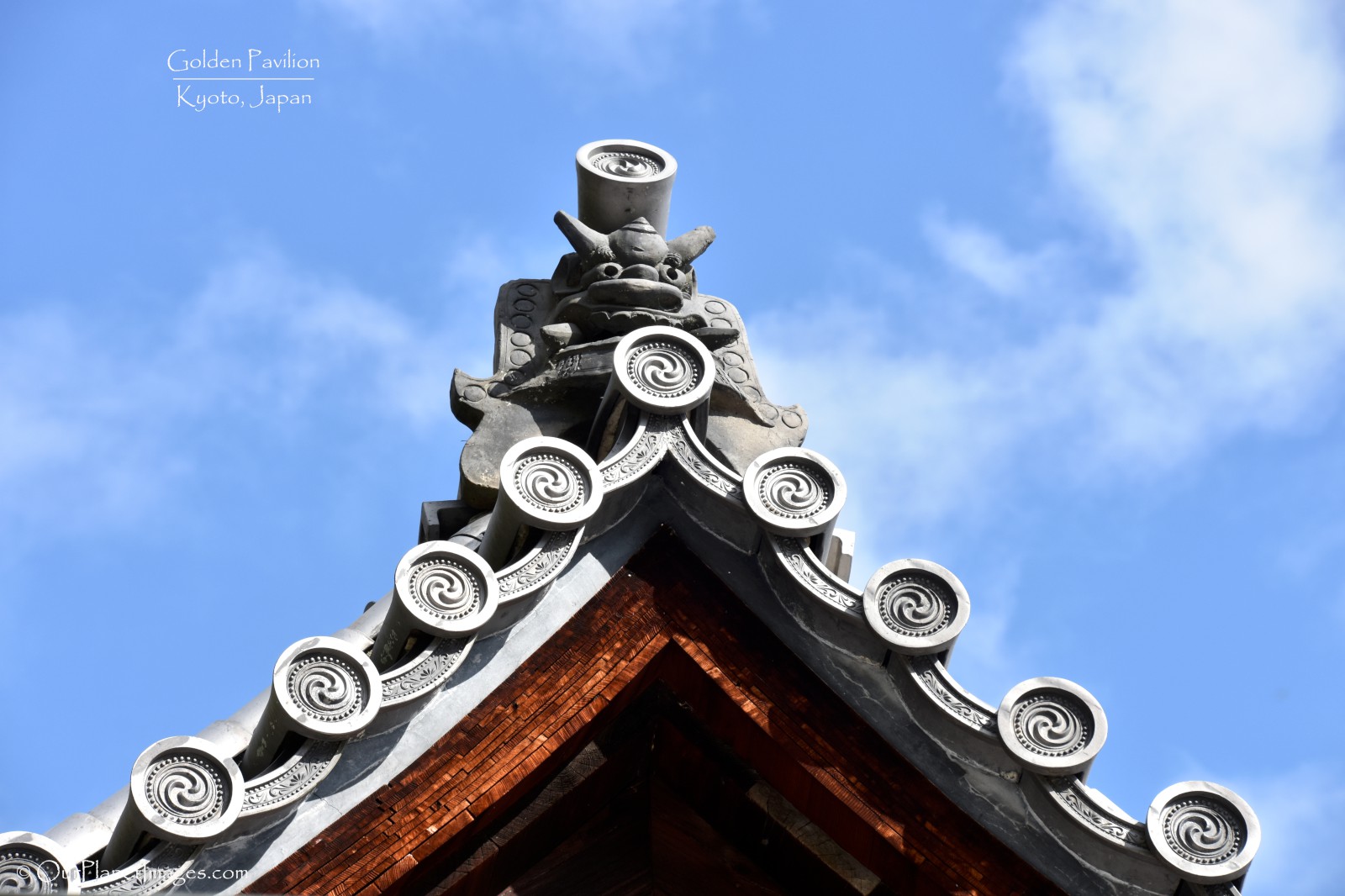
Fudo Hall is a small shrine that is a popular stop for people to ring the temple bells, light incense and candles while asking for blessings.
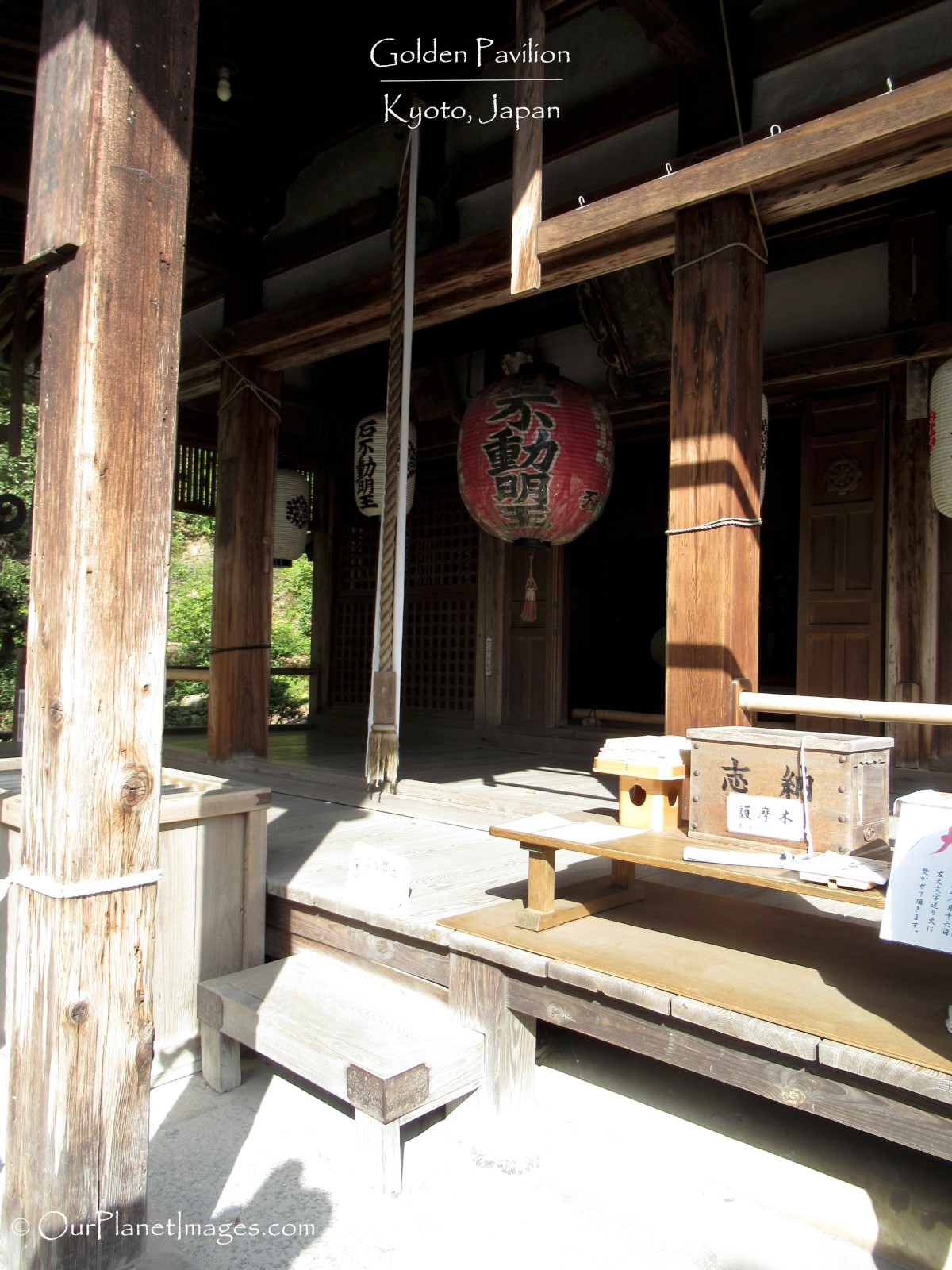


The Sekkatei Teahouse is a good example of a modest teahouse that is designed to focus the attention of the tea ceremony.
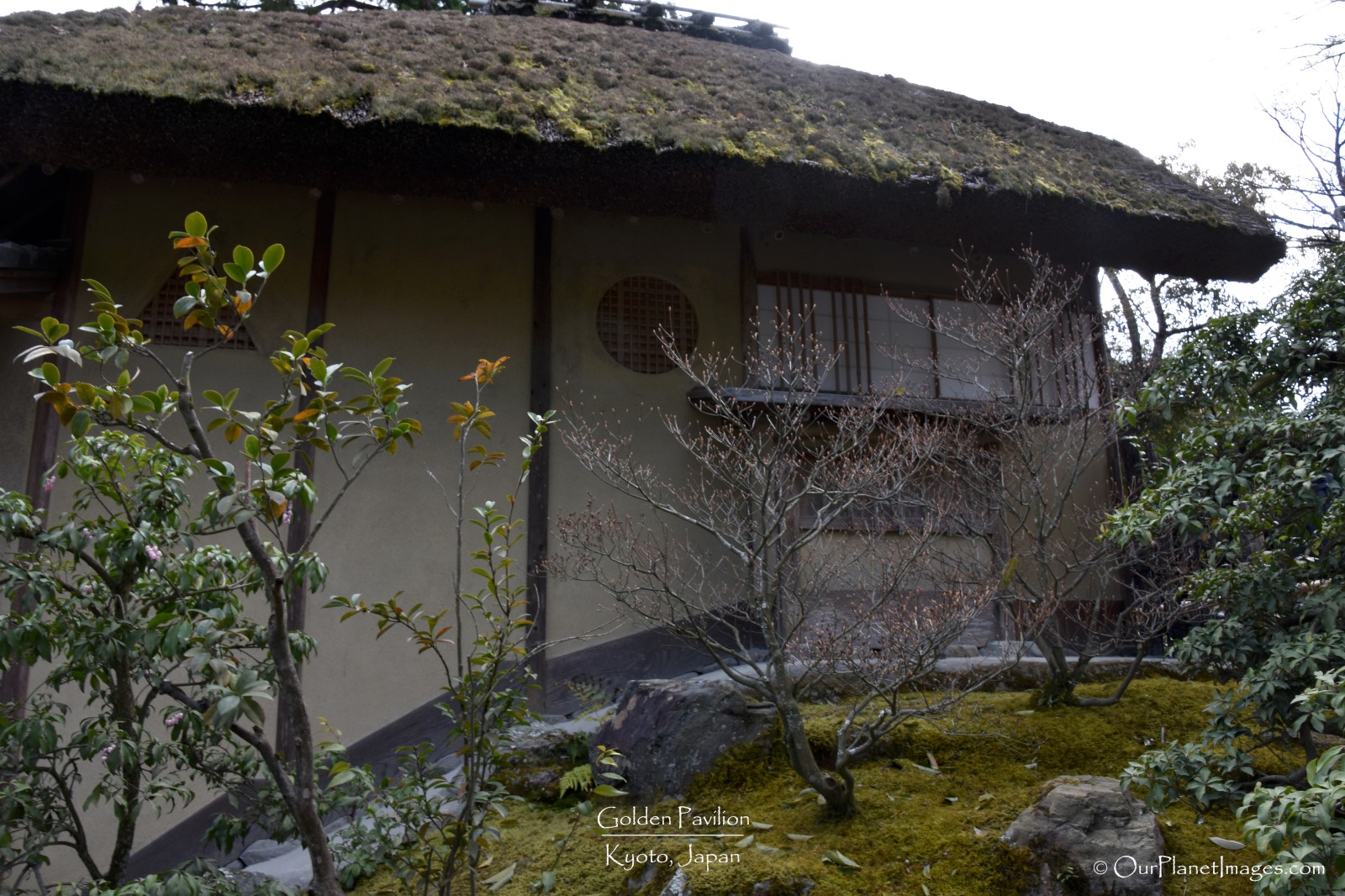
The Dust on My Shoes
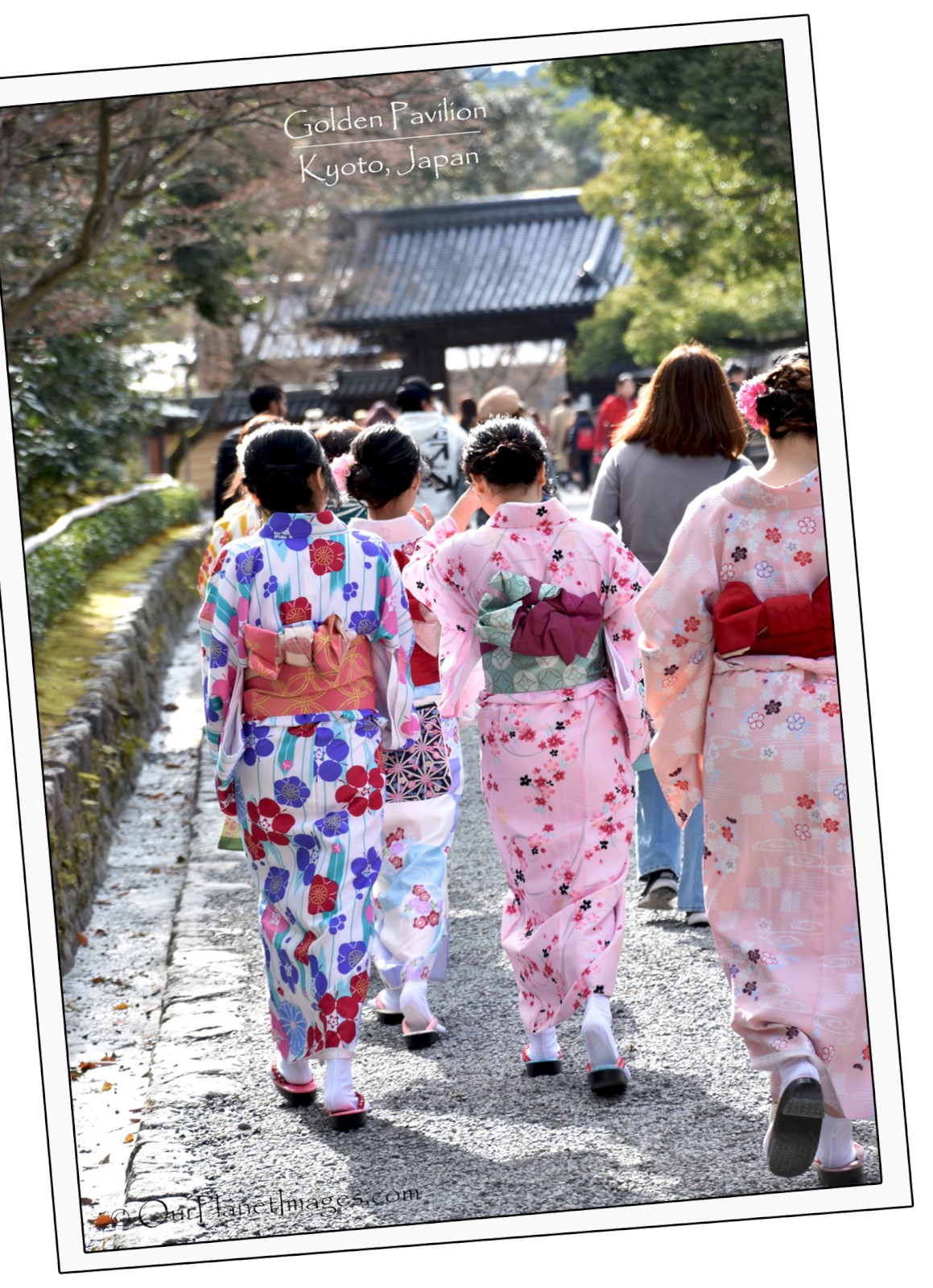
Photo Tip:
It is common to see women wearing in Kimono dresses at religious sights all over Japan. A woman wearing a Kimono dress instantly identifies the scene as being from Japan. Without the women wearing kimono dresses, this photo could have been taken almost anywhere but the kimono dress instantly identifies this location as Japan.
Adding identifying symbols to a photo will give the photo a deeper meaning. They can also help to communicate a thought or emotion. In this photo the Kimono dress is the focus of the photo with the Asian style roof in the background but other times the identifying symbol can be something that is less dominant but it will help to add a deeper meaning to the photo.
